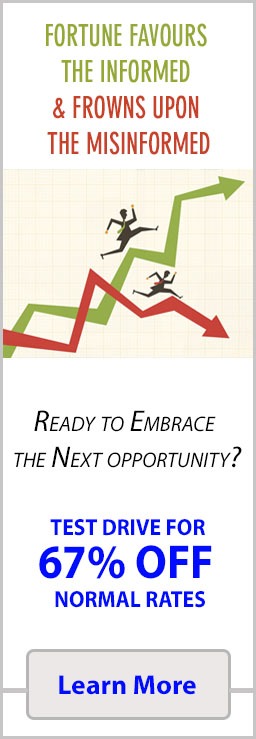
The Advisor Trap: When Fear and Hype Drive Your Most Important Financial Decision
Jul 3, 2025
Picture this: Your 401(k) just lost 20% in a market crash, your neighbor swears by his “miracle worker” advisor who “called the whole thing,” and panic has you ready to hand over your life savings to whoever promises safety. Sound familiar? You’re about to make one of the costliest decisions of your financial life, and your brain is sabotaging you every step of the way.
Don’t just pick whoever your neighbor praises. That path leads to mediocre returns, hidden fees, and retirement dreams that crumble under the weight of poor advice. How can understanding cognitive biases improve choosing a financial advisor? It’s the difference between hiring a salesperson who exploits your fears and finding a fiduciary who actually serves your interests.
Most people choose financial advisors the same way they choose restaurants: recommendations from friends, impressive marketing, and gut feelings. But your retirement isn’t a dinner reservation. It’s a decades-long relationship that will determine whether you spend your golden years in comfort or counting pennies. The biases that feel like shortcuts are actually trapdoors.
The smartest investors know this: your brain’s default settings will lead you to the wrong advisor almost every time. But once you recognize these mental tripwires, you can step around them and find the advisor who actually deserves your trust.
The Authority Bias: Why Impressive Credentials Can Blind You
Walk into any financial planning office and you’ll see walls lined with certificates, awards, and alphabet soup credentials. CFP, CFA, ChFC—the human brain interprets these displays as competence signals. But authority bias makes us conflate credentials with actual ability to manage money.
Here’s what the industry doesn’t want you to know: many of those impressive certifications require no actual investment performance track record. A advisor can fail their clients for decades while maintaining their credentials as long as they pay their dues and complete continuing education. Meanwhile, some of the best money managers never bothered with fancy letters after their names.
The 2008 financial crisis revealed this truth brutally. Thousands of highly credentialed advisors led their clients into toxic investments because their training focused on product sales, not risk management. The credentials were real; the competence was theater.
Smart approach: Ask about actual performance during market downturns. How did their clients fare in 2008, 2020, or any other crisis? If they dodge this question or blame external factors, you’re talking to a salesperson, not a money manager.
The Halo Effect: When One Good Thing Blinds You to Everything Else
Your potential advisor mentions they called the 2020 market bottom perfectly. Suddenly, every other red flag disappears. High fees? Doesn’t matter—they’re a market genius. Complicated investment products you don’t understand? Must be sophisticated strategies. This is the halo effect in action, and it’s financial advisor kryptonite.
The reality is harsher: predicting one market move proves nothing about long-term investment ability. Markets are complex systems where even broken clocks are right twice a day. The advisor who perfectly timed the COVID recovery might have blown up client accounts during the tech bubble or housing crisis.
Even worse, advisors know how to exploit the halo effect. They’ll lead with their best call while conveniently forgetting their worst ones. It’s survivorship bias packaged as competence, and your retirement savings become the casualty.
Better filter: Ask for their complete track record, including years when they underperformed. Any advisor worth hiring will discuss their mistakes and what they learned. The ones who can’t are either lying or have learned nothing from their failures.
Confirmation Bias: How Your Existing Beliefs Sabotage Your Search
You walk into an advisor meeting already convinced that tech stocks are the future, or that gold is the only real store of value, or that real estate never fails. The advisor who agrees with your preconceptions gets hired. The one who challenges your thinking gets dismissed as “not understanding your situation.”
This is confirmation bias at its most expensive. You’re not hiring financial expertise; you’re paying someone to validate your existing opinions. But the market doesn’t care about your opinions. It cares about mathematics, risk management, and long-term fundamentals.
The crypto boom of 2021 illustrated this perfectly. Investors who already believed in digital assets sought out advisors who shared their enthusiasm. Those advisors helped them pour retirement savings into Bitcoin at $60,000 and Ethereum at $4,000. The believers got what they wanted: validation. They also got portfolio destruction when the bubble burst.
Contrarian wisdom: The advisor who makes you slightly uncomfortable might be the one you need. If they’re challenging your assumptions with data rather than emotion, they’re probably thinking independently rather than telling you what you want to hear.
The Recency Bias Trap: Why Recent Performance Predicts Nothing
The best-performing advisor over the past three years gets flooded with new clients. The worst-performing advisor watches their practice evaporate. This seems logical until you realize that financial markets are cyclical, and yesterday’s winners often become tomorrow’s disasters.
Value investing looked dead during the tech bubble—until it delivered spectacular returns in the 2000s. Growth strategies dominated the 2010s—until inflation and rising rates made them toxic in 2022. The advisor who looks brilliant today might be using strategies that worked in the last market cycle but will fail in the next one.
Recency bias makes us extrapolate short-term results into long-term predictions. We assume current trends will continue forever, hiring advisors based on their ability to navigate yesterday’s challenges rather than tomorrow’s unknowns.
Smarter approach: Look for advisors whose strategies have worked across multiple market cycles, not just the most recent one. Ask how they performed during different economic environments: rising rates, falling rates, inflation, deflation, bull markets, bear markets. Consistent competence beats recent brilliance.
Social Proof: Why Everyone Else’s Choice Might Be Wrong for You
Your golf buddy swears by his advisor. Your sister’s financial planner comes highly recommended. Your coworker’s retirement account is crushing it with their guy. Social proof bias makes these endorsements feel like evidence, but they’re actually noise masquerading as signal.
Financial needs are deeply personal. Your golf buddy might be a high-income professional who can afford aggressive strategies that would destroy your more modest retirement savings. Your sister might prioritize different goals or have different risk tolerance. Your coworker might be comparing their advisor’s performance during a bull market that lifted all boats.
Even worse, people rarely admit when their financial advisor is failing them. Cognitive dissonance makes us rationalize poor performance rather than acknowledge we made a bad choice. That glowing recommendation might be coming from someone whose portfolio is quietly hemorrhaging money.
Independent verification beats social proof: Check the advisor’s regulatory record through FINRA’s BrokerCheck or the SEC’s Investment Adviser Public Disclosure. Look for customer complaints, regulatory violations, or employment terminations. This public data tells you more than a dozen personal recommendations.
The Sunk Cost Fallacy: Why Switching Feels Impossible
You’ve been with your current advisor for five years. The performance has been mediocre, the fees are high, and communication is poor. But switching feels like admitting failure, and all those fees you’ve already paid would be “wasted.” The sunk cost fallacy keeps you trapped in a relationship that’s slowly eroding your financial future.
This bias is particularly vicious in financial relationships because the stakes are so high and the timeframes are so long. Poor performance can take years to become obvious, and by then the psychological commitment feels overwhelming. You convince yourself that things will improve, that the advisor just needs time, that the fees are justified by some future benefit.
Meanwhile, opportunity cost compounds. Every year you stay with an underperforming advisor is a year of lost returns that can never be recovered. The “waste” of switching fees pales compared to the waste of staying put.
Liberation strategy: Calculate the true cost of staying versus switching. Factor in performance differences, fee structures, and time horizons. Most people discover that the pain of switching is temporary, but the cost of not switching is permanent.
The Contrarian’s Advisor Selection Playbook
Forget the conventional wisdom about choosing financial advisors. The standard advice—check credentials, ask for references, meet in person—barely scratches the surface. Here’s what actually works:
First, interview multiple advisors during the same market conditions. How they respond to current volatility tells you more about their philosophy than any marketing materials. The ones pushing “guaranteed” solutions during uncertain times are selling fear. The ones acknowledging uncertainty while explaining their risk management approach are thinking clearly.
Second, ask uncomfortable questions. How do they get paid? What products do they avoid recommending and why? What was their worst year performance-wise and how did they communicate with clients? If they won’t answer directly, they’re hiding something.
Third, demand fee transparency. Not just the headline advisory fee, but every cost associated with their recommendations. Mutual fund expense ratios, trading costs, platform fees, insurance charges—everything. If the total cost exceeds 1.5% annually, they better have exceptional performance to justify it.
Fourth, test their independence. Ask them to critique a popular investment strategy or challenge a common financial planning assumption. Independent thinkers will engage with the question. Product salespeople will deflect toward their preferred solutions.
The Real Test: How They Handle Your Biases
The best advisors don’t just avoid their own biases—they help you recognize and overcome yours. They’ll challenge your overconfidence, question your assumptions, and force you to confront uncomfortable truths about risk and time horizons.
When you meet with potential advisors, watch how they respond to your existing portfolio or investment ideas. Do they immediately agree with everything you’ve done? Red flag. Do they trash your current approach without understanding your reasoning? Different red flag. The right advisor will ask thoughtful questions, understand your logic, then provide alternative perspectives backed by evidence.
Pay attention to how they discuss risk. If they promise to eliminate risk, they’re lying. If they ignore risk, they’re dangerous. The right approach acknowledges that risk is unavoidable but can be managed, measured, and matched to your specific situation.
Watch their body language when you mention popular investment trends. Do their eyes light up when you mention AI stocks or cryptocurrency? Do they immediately start pitching related products? Or do they stay neutral and ask about your research and reasoning? The difference reveals whether they’re opportunistic or genuinely focused on your long-term success.
The advisor who makes you think differently about money—who challenges your mental shortcuts and forces you to confront your psychological blind spots—might be the one who saves your retirement. The one who validates everything you already believe might feel better in the moment, but they’re just an expensive yes-person.
Your biases got you this far. But they won’t get you to retirement security. Choose the advisor who understands this truth and has the courage to act on it.












